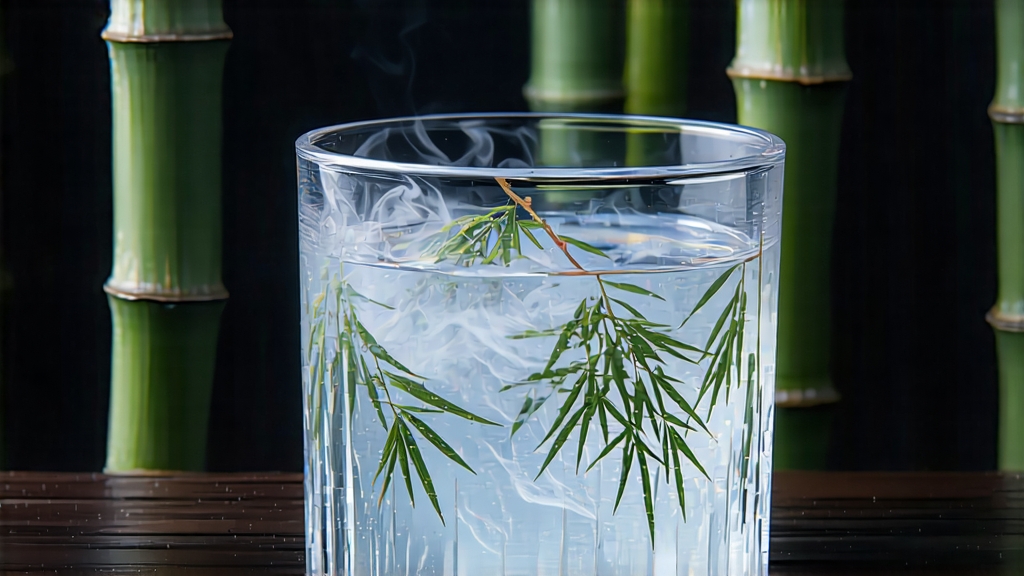
Bai Hao Yin Zhen—“Silver Needle of White Down”—is the quiet aristocrat of Chinese tea. While green tea commands the spotlight and pu-erh courts collectors, Yin Zhen drifts like moonlight across a garden, asking only for patience and a clear glass. International drinkers often meet white tea through bagged blends, yet the original loose Silver Needle remains a revelation: a liquor the color of early dawn, a fragrance that suggests fresh alfalfa, dried apricot, and the faint ozone after rain. To understand it is to step into three centuries of Fujian history, into leaf-houses scented with mountain mist, and into a philosophy that values restraint over spectacle.
Historical roots
White tea’s written record begins in the late Song dynasty (960-1279), but Yin Zhen’s rise is traced to 1796, when tea makers in Fuding County first picked the unopened buds of the Da Bai cultivar, air-dried them on bamboo trays, and presented the down-covered needles to the imperial tax bureau. The tribute never reached Beijing’s throne—local legend claims the shipment was diverted by a smitten magistrate who kept the fragrant cargo for himself—yet the style survived. By 1857, the discovery of the larger, heartier Da Bai Hao bush in Tai Mu Shan allowed greater yields; by 1891, Silver Needle was sailing from Fuzhou to London, tucked beside porcelain and silks, fascinating Victorian apothecaries who praised its “delicate medical nose.” In the 1920s, Fuding’s merchants coined the export grade “Pekoe Tips,” cementing the tea’s global persona. Today, protected geographical indication (PGI) status restricts authentic Yin Zhen to Fuding and nearby Zhenghe, where subtropical humidity, red granitic soil, and cooling sea breezes create the ideal terroir.
Cultivar and picking
Only two varietals are legally sanctioned: Fuding Da Bai Hao and Zhenghe Da Bai. Both sprout plump, ivory-colored buds whose density of amino acids—especially L-theanine—runs double that of most green teas. Picking occurs for barely fifteen mornings each spring, typically from mid-March to early April, when night temperatures still dip below 15 °C. Workers nip the bud just above the first scale, leaving behind any leaf or stem; a skilled picker gathers barely 500 g of fresh material per hour. It takes roughly 30,000 buds—an entire day’s labor for six people—to yield one finished kilogram of Silver Needle.
Craft: the art of doing almost nothing
Unlike pan-firing or rolling, white-tea processing is a meditation on evaporation. The traditional route, still followed by small family workshops, unfolds in four passive stages:
- Withering: buds are spread one layer deep on reed-woven trays set inside a sun-lit, breeze-ventilated shed. Over 36–48 hours, moisture drops from 75 % to 12 %; chlorophyll gently breaks down, polyphenols oxidize only at the cut surface, and a faint enzymatic aroma reminiscent of honeydew arises.
- Shade rest: trays are stacked in dim alcoves for 4–6 hours, allowing internal moisture to equalize—critical for preventing “bone-dry shell, damp heart” that would sour later storage.
- Solar finish: on the second morning, the needles are set outside for a brief, low-angle sunning (20–40 min) that halts residual oxidation and fixes the silver down.
- Charcoal bake: a final 20-minute kiss at 40 °C over embers of local lychee wood drives moisture below 7 % while adding a whisper of sweet smoke most drinkers will never detect but subconsciously register as depth.
Modern factories shorten withering to 18 hours using climate chambers set at 28 °C and 65 % RH; purists insist the cup loses the “mountain air” note, yet both styles qualify as authentic if leaf standards are met.
Grading & age-worthiness
Export grades are simple—Special, First, Second—based on bud length (2.5–3 cm), down density, and presence of broken tips. Unlike green tea, Silver Needter is deliberately built for aging. Over years, residual enzymes and non-enzymatic browning create maltol, 2-acetylpyrrole, and other “cocoa-milk” aromatics. A 2018 study